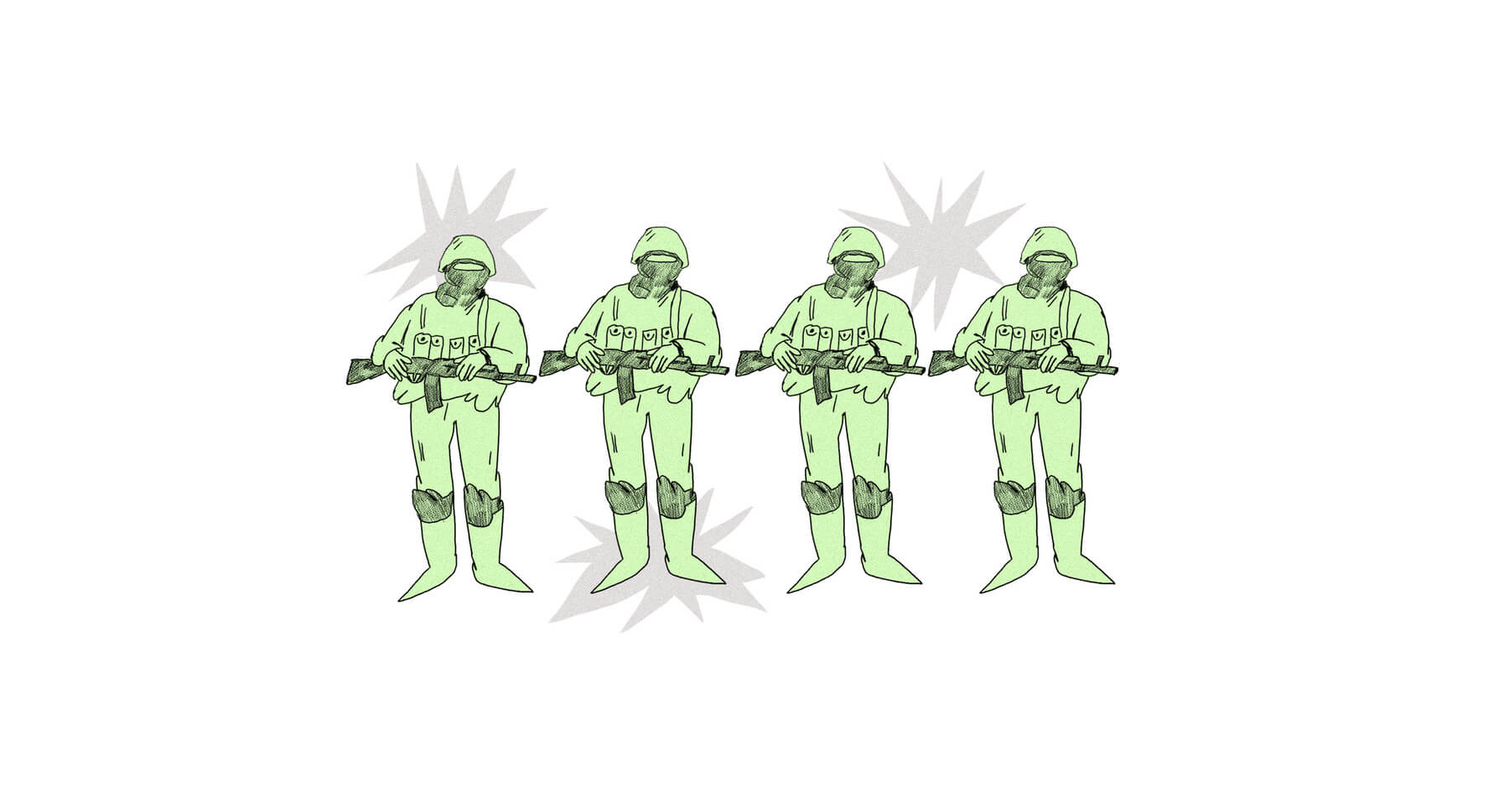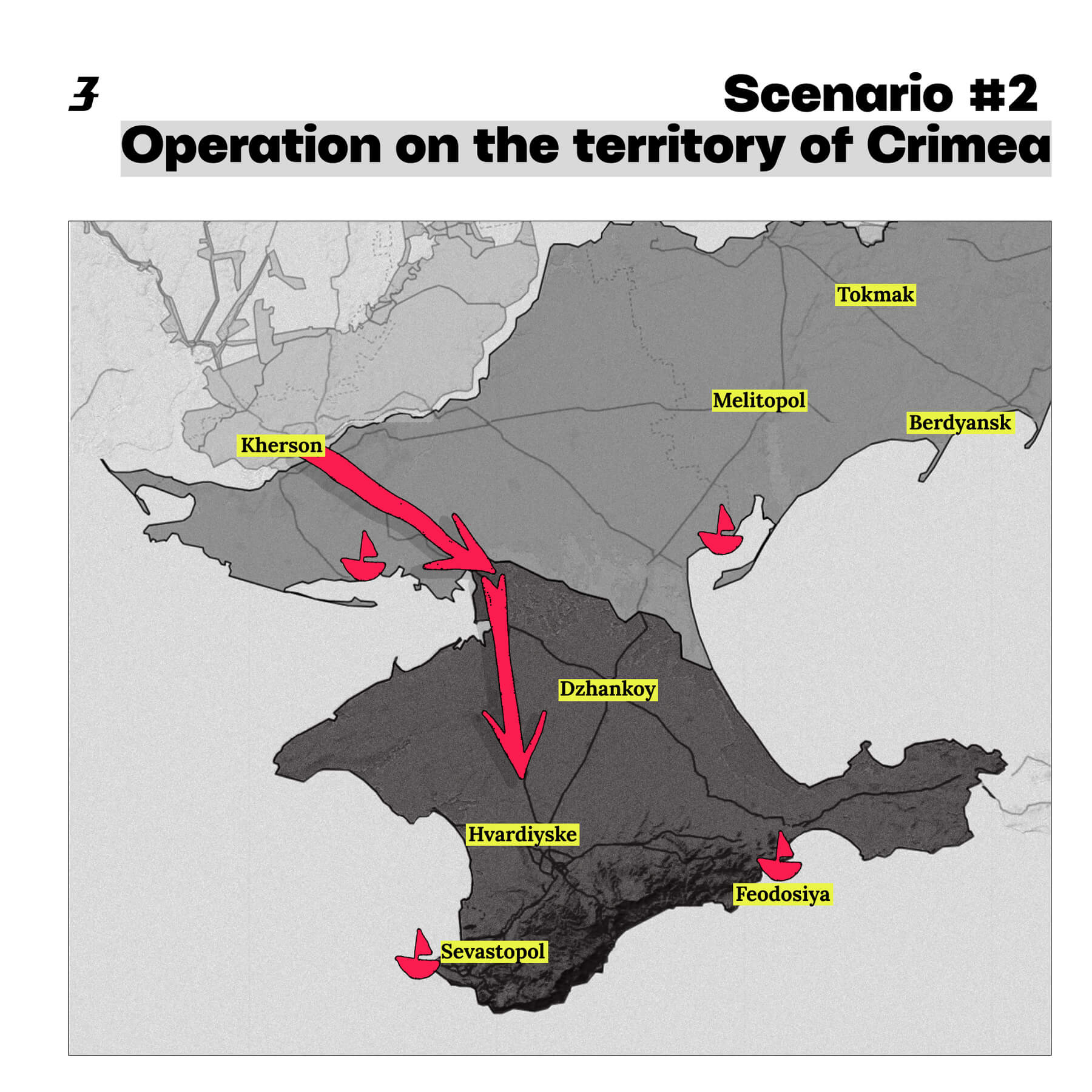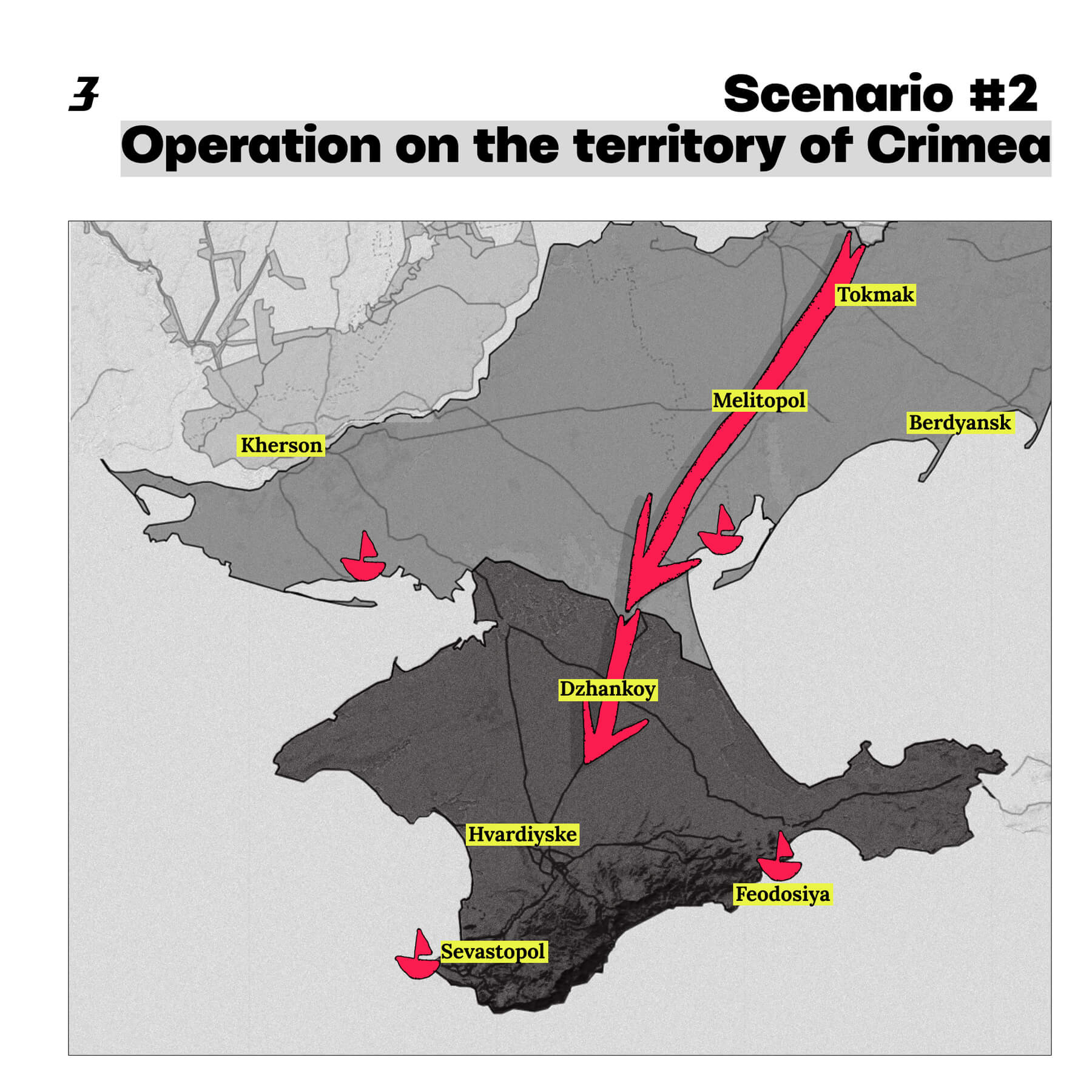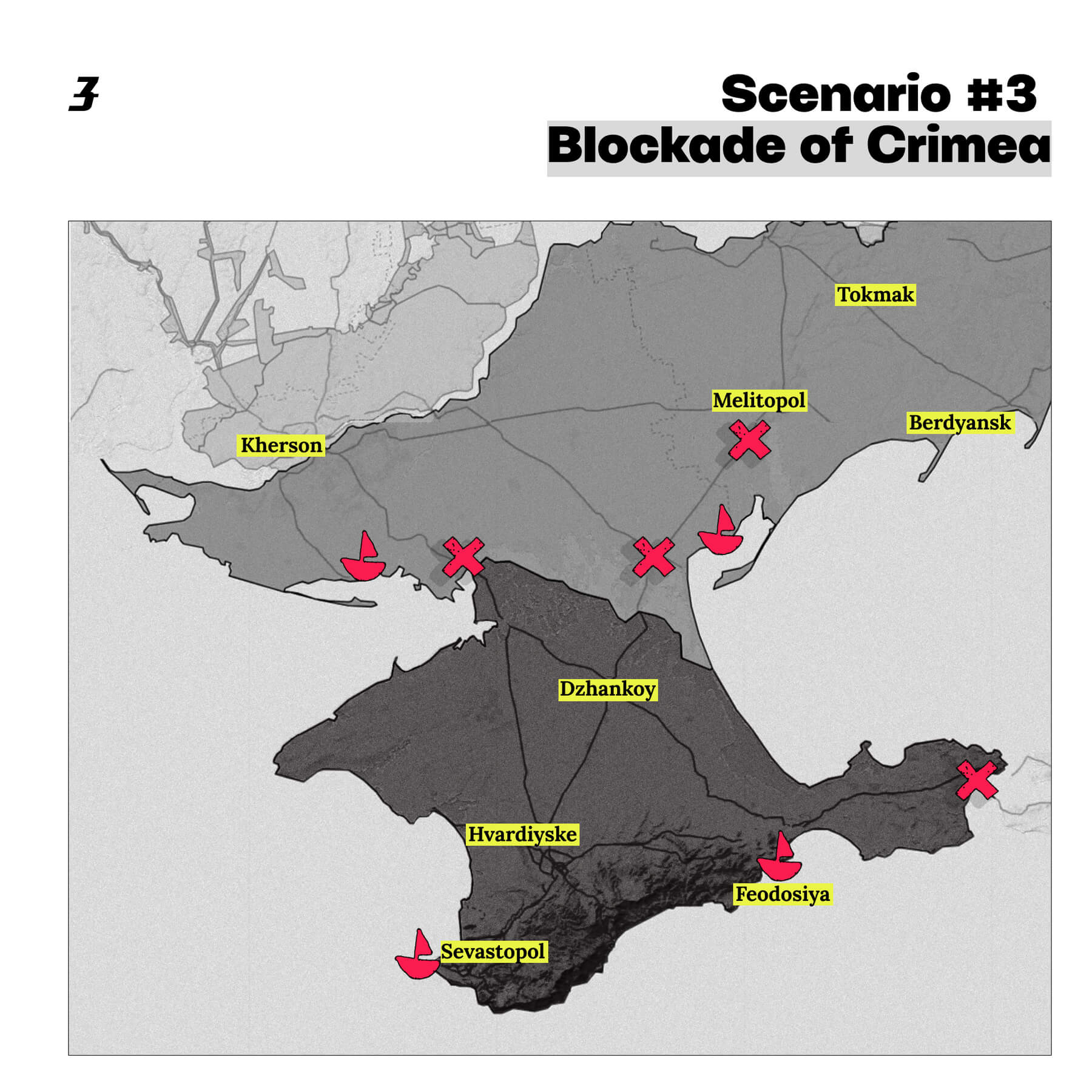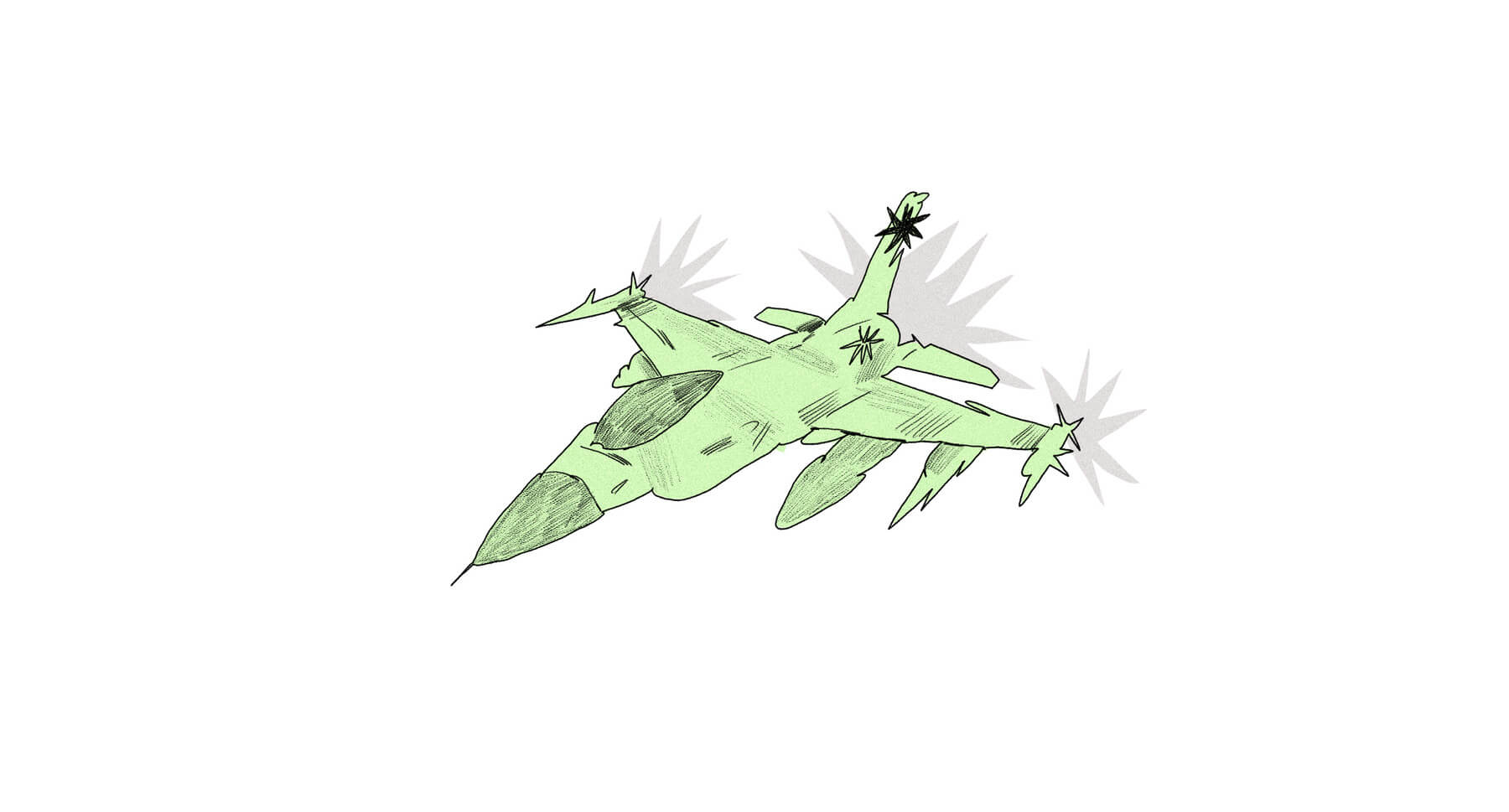In 2023, some Ukrainian officials, including the head of the Main Intelligence Directorate of the Ministry of Defense of Ukraine, Kyrylo Budanov, predicted that Ukrainian troops would enter Crimea by the end of 2023. However, as we know, these plans failed to materialize.
In 2024, the authorities are much more cautious in their forecasts, but the liberation of Crimea will again be one of the main tasks of the Ukrainian Defense Forces, particularly because it will reduce the number of missile and drone attacks from the peninsula.
But is the military way really the only way? Together with military and political experts, Zaborona considered the most likely scenarios for the development of events around Crimea to understand what we can expect in 2024 on this front.
Scenario 1: Diplomacy
In the spring of 2014, when Russia began the annexation of Crimea by sending its “little green men” there, Ukraine had neither the strength nor the means to repel the Kremlin’s aggression. Not without guidance from the West, Kyiv chose the diplomatic route to return the peninsula.
Refat Chubarov, Chairman of the Mejlis of the Crimean Tatar People, Member of Parliament of Ukraine of the VIII convocation (2015-2019), recalls that during the Crimean Platform summit in August 2021, its participants signed a declaration stating that the liberation of Crimea could only take place through negotiations with Russia. This was a condition of many Western leaders and representatives. But the full-scale invasion in February 2022 changed their minds completely.
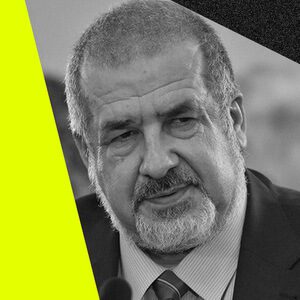
“During the second summit in 2022, almost all of our partners said that the outcome of this war should be the liberation of all the occupied territories of Ukraine, including Crimea. And the way to liberate the peninsula wasn’t defined as only diplomatic. On the contrary, in their speeches, leaders and representatives of various states spoke about the possibility of a military liberation,” he told Zaborona.
The year 2023 further strengthened the position of Ukraine and our partners that the liberation of the peninsula is the key to the final restoration of Ukraine’s territorial integrity. “And the events that are taking place around Crimea and directly on its territory (I mean the strikes on military facilities) indicate that the military way is now seen not only as one of the probable ways, but as the only way to liberate the peninsula. The course of the war will show everything. Anything can happen,” says Chubarov.

Volodymyr Ohryzko, Minister of Foreign Affairs in 2007-2009, does not believe in the political and diplomatic scenario of returning the annexed peninsula. In a commentary to Zaborona, he recalled one of the latest statements by Russian President Vladimir Putin that Russia is not going to return the conquered territories, and therefore it is impossible to do so through negotiations.
“So the answer is clear: Putin will not accept any negotiations on this topic, and Medvedev has once again stated that Russia’s goal is to destroy Ukraine. So what kind of diplomacy can we talk about now? The only way to liberate Crimea is by force,” Ohryzko said.

Illustration: Kateryna Kruhlyk / Zaborona
Scenario 2: Ukrainian army ground operation in Crimea
A ground operation by the Ukrainian Armed Forces with the successful entry of Ukrainian units into Crimea is the most positive scenario. Theoretically, this scenario can be realized in several ways.
The first is for the Ukrainian Armed Forces to continue to break through the corridor from the already liberated Robotyne to Tokmak and on to Melitopol.
The second is an attempt to force the Dnipro River from the right to the left bank in the Kherson region to advance to Armyansk, located on the isthmus between Crimea and mainland Ukraine.
Both options have their strengths and weaknesses. As for the option of continuing to break through the corridor from Robotyne, a significant disadvantage of this route would be the need to liberate the large cities of Tokmak and Melitopol, which is a rather difficult military task. Ukrainian troops cannot bypass these settlements and move south, because leaving large Russian military groups in their rear (even when surrounded) is a dangerous step.
In the case of the Dnipro crossing, the main problem and difficulty will certainly be the crossing itself. It’s one thing to transport small infantry units to the left bank, which is happening during the winter of 2023-2024, and quite another to transport heavy equipment necessary for a large-scale ground operation across the Dnipro.
Thus, in the case of a possible movement of the Ukrainian Armed Forces through Tokmak and Melitopol, the Ukrainian army can conveniently organize logistics, but at the same time, the path itself is quite long (160 kilometers to Genichesk with significant obstacles). In the case of crossing the Dnipro, the distance the Defense Forces would have to travel to the isthmus with Crimea would be much shorter (88 kilometers to Armyansk), but Ukrainian defenders would have to face one of the most difficult military operations – crossing large water obstacles.

Infographic: Kateryna Kruhlyk / Zaborona 
Infographic: Kateryna Kruhlyk / Zaborona
For both scenarios, Ukraine will need considerable resources: manpower and equipment. And judging by the latest news from the front line, in the South of Ukraine, these resources are currently insufficient not only for the offensive but also to defend the previously liberated territories. For example, a soldier serving on the left bank of the Kherson region told the Financial Times that the situation on this part of the front is quite difficult for Ukrainian units, and with the current ratio of forces and resources, he believes that Ukraine has little chance of expanding its bridgehead on the left bank.
However, the complexity of the situation today does not mean that the scenarios described above are impossible to realize. In 2024, Ukraine is likely to gain a significant advantage that it did not have in the summer of 2023. F-16s will be a significant boost for ground forces, as they will be able to drive Russian aircraft away from Ukraine’s borders and block the Russians from dropping guided bombs they are currently using all along the front line.
During the summer counteroffensive, the lack of air cover significantly hampered the capabilities of Ukrainian ground forces, who had to conduct offensive operations under aerial bombardment. We see the same thing in January 2024 on the left bank of the Kherson region: the positions of Ukrainian units in Krynky are under constant bombardment by Russian aircraft. If F-16s can drive back Russian aircraft, the Ukrainian Armed Forces’ advance on the ground will have much more prospects.
Scenario 3: Blockade of Crimea
The blockade of Crimea as one of Ukraine’s priorities in 2024 was announced by the Supreme Commander-in-Chief, President of Ukraine Volodymyr Zelensky in an interview with The Economist: “Isolating Crimea, which was annexed by Russia in 2014, and degrading Russia’s military capabilities there is extremely important for us because it is a way to reduce the number of attacks from this region.”
From a pragmatic point of view, the option of blockading Crimea without conducting a ground operation seems much more realistic. It can be done with mostly long-range weapons without the use of human resources. And, importantly, this is in line with the position of Zelensky and of the Commander-in-Chief of the Armed Forces Valeriy Zaluzhnyi (and the whole of Ukraine) that it is very important to save the lives of the soldiers.
The main criterion for the success or failure of a possible blockade of Crimea will be whether Kyiv has a sufficient number of long-range weapons. In 2023, the French-British SCALP/Storm Shadow cruise missiles have already demonstrated the ability to hit targets located in Crimea: the destruction of warships and the Russian Navy’s Black Sea Fleet Headquarters is a clear confirmation of this.

Infographic: Kateryna Kruhlyk / Zaborona
At the same time, it will be necessary to continue systematically destroying the Russian Navy fleet in the Black Sea to make sea supplies impossible. However, this will become a reality only with numerous long-range weapons.
Currently, the most effective long-range weapons in Ukraine’s arsenal are SCALP/Storm Shadow cruise missiles. However, their number does not allow for strikes with the required frequency. Germany’s approval of the transfer of Taurus cruise missiles to Ukraine could save the situation. These missiles have an important advantage over their French-British counterparts: range. The SCALP/Storm Shadow missiles have a range of 250 kilometers, while the German Taurus has a range of more than 500 kilometers. So there is plenty to start systematically hitting the Crimean Bridge with.
Another important factor may be the appearance of F-16 aircraft in Ukraine, which was mentioned in the previous scenario. These Western platforms, in addition to covering troops and countering enemy aircraft on the mainland, are capable of carrying a huge list of Western long-range missiles, which can also significantly help in the blockade of the Crimean Peninsula.
Scenario 4: No changes
Unfortunately, the scenario that Ukraine will not be able to significantly change the situation around Crimea in 2024 remains quite likely. The main reason for this will be insufficient assistance from Western allies. If the U.S. does not resume its funding for the needs of the Armed Forces, and European countries do not increase the number of long-range weapons, any blockade of Crimea will be impossible due to the simple lack of tools.

Illustration: Kateryna Kruhlyk / Zaborona
Even if Ukraine receives F-16s, their mere presence will not be of much help in solving the task of de-occupying Crimea without a sufficient number of long-range weapons. In such a situation, the Ukrainian Armed Forces will be able to conduct only one-off operations, as is the case now. Obviously, this position cannot solve the problem of either liberating Crimea or blockading it.
Moreover, if the United States and the EU do not consolidate their efforts to provide financial and military assistance to Ukraine in 2024, the issue of Ukraine’s capabilities may have a huge delta this year. This, in particular, was stated by Fiona Hill, a prominent expert on Russia who served as National Security Advisor at the White House.
“In this respect, we have now reached a tipping point between whether Ukraine continues to win in terms of having sufficient combat power to repel Russia, or whether it actually starts to lose because it does not have the equipment, heavy weapons, and ammunition. This external support will be crucial,” the expert said in an interview with Politico.


